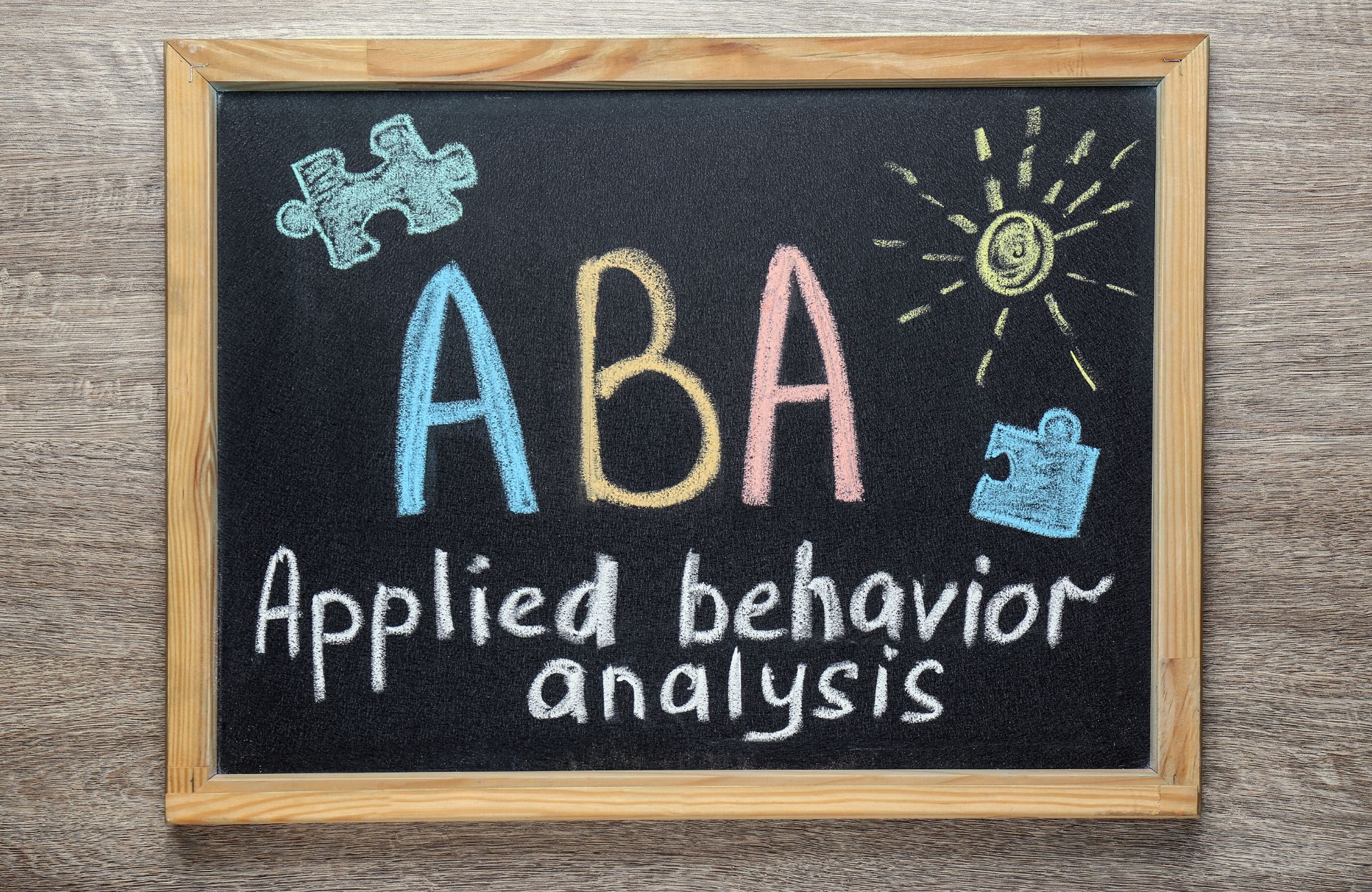Exploring the differences between obsessive-compulsive disorder vs. autism is important, especially when the two conditions can look so similar. Repetitive behaviors, intense interests, and social challenges often blur the line between them, leaving many families unsure of what’s really going on. But while OCD and autism can overlap, they come from different places, and recognizing those differences is key to finding the right diagnosis, support, and path forward.
What is Obsessive-Compulsive Disorder (OCD)?
Obsessive-compulsive disorder is a mental health disorder characterized by unwanted, intrusive thoughts (obsessions) that trigger significant anxiety, followed by repetitive behaviors or mental acts (compulsions) performed to reduce that anxiety. These compulsions are often ritualistic and can consume considerable time and energy.
OCD affects approximately 1.6% of the general population, and symptoms typically emerge during adolescence or early adulthood. The condition causes significant distress and can substantially impact daily functioning, from work performance to interpersonal relationships.
What is Autism Spectrum Disorder (ASD)?
Autism spectrum disorder is a neurodevelopmental disorder that affects how a person perceives and interacts with the world around them. Unlike OCD, autism is present from early childhood, with symptoms generally developing before a child turns two years old, though diagnosis may come later.
According to the Centers for Disease Control and Prevention (CDC), about 1 in 31 (3.2%) children aged 8 years have been identified with autism spectrum disorder (ASD). Autism affects how a person communicates, behaves, learns, and interacts with others. It’s called a “spectrum” disorder because it presents with varying degrees of severity and a wide range of symptoms.
Detailed Symptom Comparison
Understanding the similarities and differences between OCD and autism requires a close examination of their symptoms. While both conditions may appear similar on the surface, they differ significantly in their underlying causes and functions.
Repetitive Behaviors
OCD: In OCD, repetitive behaviors (compulsions) are done to reduce anxiety from obsessive thoughts. Even though individuals often know these actions are excessive, they feel unable to stop. Common examples include excessive handwashing, repeatedly checking locks, counting or arranging items, and silently repeating phrases.
Autism: In autism, repetitive behaviors, often called “stimming,” serve purposes like providing sensory input, helping with self-regulation, expressing emotions, or offering enjoyment. Examples include hand flapping, rocking, spinning objects, or repeating words and phrases.
The key difference is in function: OCD behaviors aim to reduce distress, while autistic behaviors often serve sensory, regulatory, or pleasurable purposes.
Obsessive Thoughts vs. Special Interests
OCD Obsessions: OCD obsessions are unwanted, intrusive thoughts that cause significant anxiety and distress. They often focus on fears of contamination, harm, or uncertainty and feel foreign to the person’s sense of self.
Autism Special Interests: In autism, special interests are enjoyable, deeply engaging, and often become a key part of a person’s identity. They provide comfort, pleasure, and expertise through focused and comprehensive exploration.
As one expert puts it, “For teens with autism, these obsessions are usually an interest and a joy,” while OCD obsessions are typically about fears and worries that hold a person back.
Social Interaction Challenges
Both conditions can present challenges with social interaction, but for different reasons:
OCD: In OCD, social difficulties often come from shame about symptoms, fear of acting on intrusive thoughts, time lost to compulsions, and anxiety about contamination or harm in social settings.
Autism: In autism, social differences are part of the condition and can include trouble understanding social cues, challenges with conversation, different ways of building relationships, and difficulty seeing things from another person’s perspective.
A person with OCD generally understands social norms but may avoid social situations due to anxiety, while an autistic person may approach social interactions differently regardless of anxiety levels.
Sensory Processing Issues
OCD: In OCD, sensory issues often connect to obsessions, such as hypersensitivity to textures triggering contamination fears, discomfort with asymmetry leading to arranging compulsions, or sensory experiences setting off intrusive thoughts.
Autism: In autism, sensory differences are more fundamental and can involve being overly sensitive or under-responsive to touch, sound, light, taste, or smell. These differences often exist on their own, not tied to anxiety, and can lead to either seeking out or avoiding certain sensory experiences.
Recent research suggests that sensory processing differences may be key to understanding the link between autism and OCD, potentially indicating different pathways to compulsive behaviors.
Co-occurrence of OCD and Autism
The relationship between OCD and autism is complex, with significant overlap between the two. Research shows that 17–37% of autistic individuals also experience OCD symptoms, and about 25% of young people with OCD have an autism diagnosis. People with autism are twice as likely to develop OCD later in life, while those with OCD are four times more likely to be diagnosed with autism. These patterns highlight the importance of screening for both conditions when either is present.
Why These Conditions Often Co-occur
Several factors may explain the frequent co-occurrence of OCD and autism:
- Shared neurological pathways: Both conditions involve similar brain regions, particularly the caudate network, which is connected to repetitive behaviors and adherence to routines.
- Genetic factors: Research suggests potential genetic links between OCD and autism.
- Anxiety vulnerability: Autistic individuals often experience higher baseline anxiety, potentially increasing vulnerability to anxiety disorders like OCD.
- Sensory processing differences: Sensory sensitivities present in both conditions may create pathways to compulsive behaviors.
When both conditions co-occur, individuals often face unique challenges that require specialized approaches to treatment and support.
Diagnostic Considerations
Accurately diagnosing OCD, autism, or both requires a careful evaluation by experienced professionals. This process usually includes interviews with the child and family, the use of standardized assessment tools, observation across different settings, and a review of medical and developmental history.
Misdiagnosis Issues
Misdiagnosis between OCD and autism is common because of overlapping symptoms. OCD behaviors may be mistaken for autism traits, autism may be missed in those diagnosed with OCD, or one condition may be overlooked when both are present. Misdiagnosis can affect treatment success, as standard OCD treatments may not work as well if autism is also part of the picture.
Assessment Tools
Proper identification often relies on specialized assessment tools:
For OCD:
- Yale-Brown Obsessive Compulsive Scale (Y-BOCS)
- Children’s Yale-Brown Obsessive Compulsive Scale (CY-BOCS)
- Obsessive Compulsive Inventory-Revised (OCI-R)
For Autism:
- Autism Diagnostic Observation Schedule (ADOS-2)
- Autism Diagnostic Interview-Revised (ADI-R)
- Autism Spectrum Quotient (AQ)
- Ritvo Autism Asperger Diagnostic Scale-Revised (RAADS-R)
- Camouflaging Autistic Traits Questionnaire (CAT-Q)
For Repetitive Behaviors:
- Adult Repetitive Behaviors Questionnaire-2 (RBQ-2A)
A comprehensive assessment approach increases the likelihood of an accurate diagnosis, which is essential for effective treatment planning.
Treatment Approaches
Treatment strategies differ significantly between OCD and autism, and require further modification when both conditions co-occur.
OCD Treatment
Evidence-based treatments for OCD include:
- Cognitive Behavioral Therapy (CBT): It focuses on identifying and challenging thought patterns while teaching techniques to manage obsessions.
- Exposure and Response Prevention (ERP): It gradually exposes individuals to anxiety triggers, helps them resist compulsions, and is considered the gold standard treatment for OCD.
- Medications: Selective serotonin reuptake inhibitors (SSRIs) are usually the first treatment, with antipsychotics or clomipramine used for more resistant cases.
- Transcranial Magnetic Stimulation (TMS): It is used for treatment-resistant OCD and works by targeting specific brain regions with magnetic fields.
Autism Support and Interventions
Autism interventions focus on building skills and providing appropriate support:
- Behavioral Approaches: Support includes Applied Behavior Analysis (ABA) to build skills, NDBI approaches, and social skills training with social narratives.
- Communication Supports: Support includes speech and language therapy, AAC tools, and visual or structured teaching methods.
- Sensory Integration: Occupational therapy, environmental modifications, and sensory regulation strategies help address sensory needs.
- Medications: Medications are used to treat specific symptoms like irritability or anxiety, but they are not a core treatment for autism itself.
Adapted Treatment for Co-occurring OCD and Autism
When both conditions are present, treatment approaches require thoughtful modification:
- Adapted CBT and ERP: Adapted treatments use more visual supports, concrete language, and special interests, with longer timeframes and greater family involvement. They also focus on building emotional recognition skills.
- Medication Considerations: Individuals may respond differently to OCD medications, requiring lower starting doses, gradual increases, and careful monitoring for side effects.
- Environmental Supports: Support includes structured routines, sensory-friendly environments, and clear communication with consistent expectations.
Research suggests that standard OCD treatments may be less effective for autistic individuals unless appropriately adapted. For example, one study found that medication treatments effective for OCD were less effective in individuals with autism.
Living with OCD and/or Autism
Daily management strategies can significantly improve the quality of life for individuals with OCD, autism, or both conditions:
Daily Management Strategies
- Structure and Routine: Using consistent daily schedules, visual reminders, predictable transitions, and clear expectations helps create structure and reduce anxiety.
- Self-Regulation Techniques: Self-regulation strategies like mindfulness, deep breathing, muscle relaxation, and sensory activities can help manage stress and emotions.
- Environmental Modifications: Setting up sensory-friendly spaces, organizing areas, and reducing environmental stressors helps create a calmer, more supportive environment.
These strategies can help reduce anxiety, support executive functioning, and provide the predictability that benefits both conditions.
Conclusion
Understanding the similarities and differences between OCD and autism is critical for proper diagnosis, effective treatment, and meaningful support. While overlapping traits like repetitive behaviors and social challenges can cause confusion, recognizing the distinct motivations and experiences behind these behaviors helps individuals, families, and clinicians provide the right care. For those experiencing both conditions, adapted strategies and personalized interventions can make a significant difference in daily life and long-term outcomes.
At Affinity ABC, we specialize in supporting children with autism through personalized, evidence-based care. If your child is showing signs of autism or experiencing overlapping challenges like OCD symptoms, our team is here to help with tailored interventions that build confidence, communication, and daily living skills. Contact us today to learn how we can support your child’s growth and success.
FAQs
Are OCD and autism related?
Yes, OCD and autism are related. They share overlapping traits like repetitive behaviors and nonverbal communication challenges. Research shows autism OCD co-occurrence happens in about 17–37% of autistic individuals. Diagnosing OCD alongside autism requires careful attention to intellectual and functional ability and received mental health services.
What is the difference between autism and obsessive compulsive personality disorder?
Autism affects social skills, sensory processing, and intellectual and functional ability from early childhood. Obsessive Compulsive Personality Disorder (OCPD) involves rigid control and perfectionism, but unlike OCD, people with OCPD don’t see their behavior as distressing.
What is the difference between obsessive and autistic people?
People with OCD have intrusive thoughts that cause anxiety and lead to compulsive behaviors, while autistic individuals show repetitive behaviors for self-regulation, enjoyment, or sensory needs, not to ease anxiety. Nonverbal communication differences are also key in autism.
What triggers OCD in a child?
OCD in children can be triggered by genetics, brain differences, trauma, or stress. Early access to mental health services is important for treating OCD, especially when co-occurring autism is involved.









